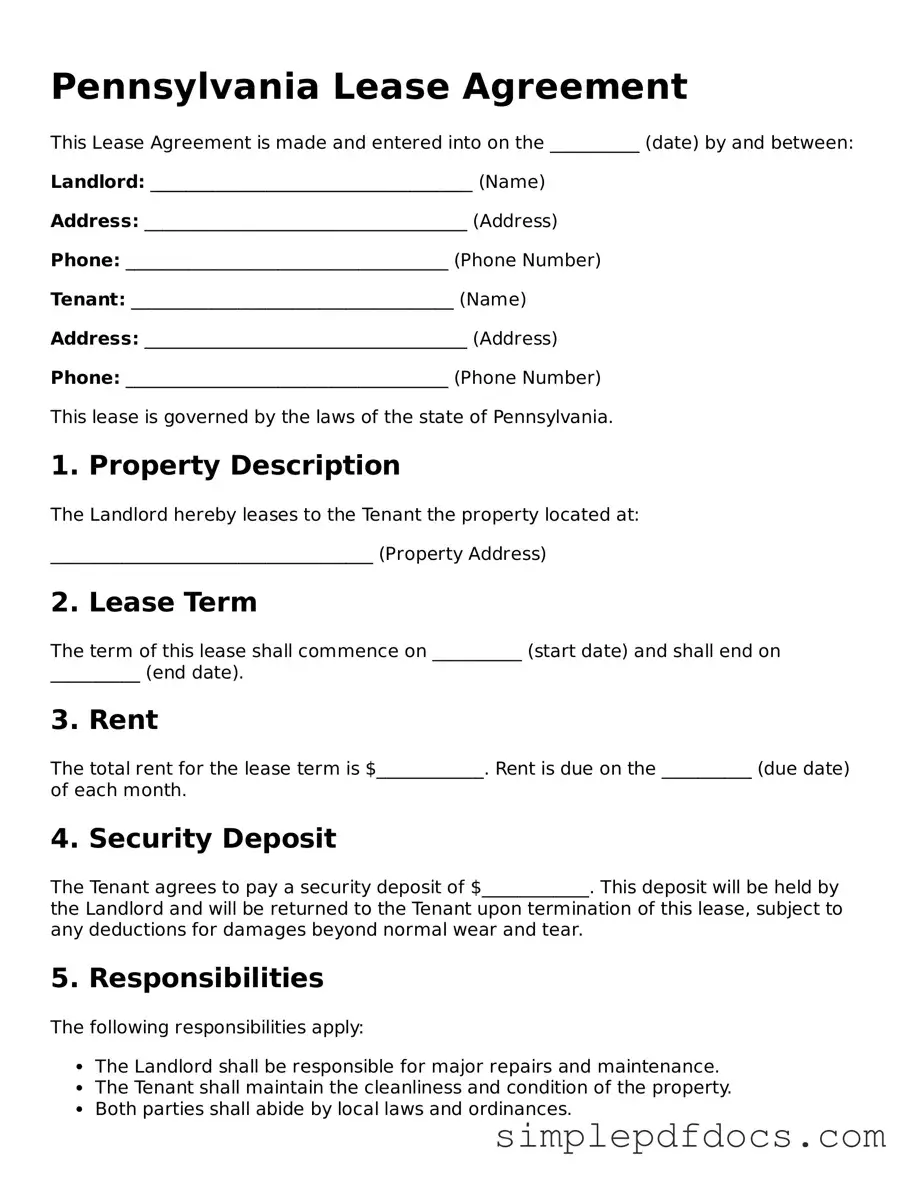Legal Lease Agreement Document for the State of Pennsylvania
A Pennsylvania Lease Agreement form is a legal document that outlines the terms and conditions between a landlord and a tenant for renting a property. This form serves as a crucial tool for both parties, ensuring clarity and protection of rights. Understanding its components can help prevent misunderstandings and disputes during the lease term.
Get Document Here
